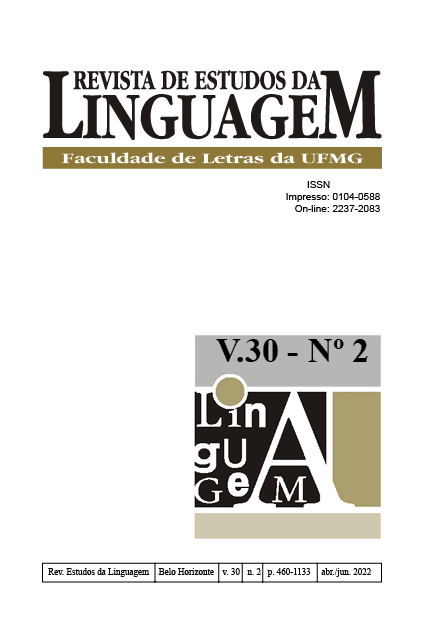Análise dos conectores “com o objetivo de” e “com o intuito de” à luz da Linguística Funcional Centrada no Uso
DOI:
https://doi.org/10.17851/2237-2083.30.2.1032-1055Palavras-chave:
conectores, finalidade, Linguística Funcional Centrada no UsoResumo
Sob o escopo teórico-metodológico da Linguística Funcional Centrada no Uso, o presente trabalho objetiva analisar as principais propriedades morfossintáticas e semântico-pragmáticas das microconstruções conectoras com o objetivo de e com o intuito de. A coleta de dados foi realizada nos corpora de modalidade escrita do português brasileiro contemporâneo, organizados pelo Núcleo de Pesquisa em Abordagem Construcional da Gramática e Tradução (NUPACT), da Universidade Federal de Juiz de Fora (UFJF). Por meio de uma análise prioritariamente qualitativa, os resultados indicam que, apesar de não estarem previstas nas principais gramáticas tradicionais, ambas as microconstruções atuam como conectores que veiculam a noção de finalidade em orações não finitas. Nessas orações, por sua vez, a posição dos conectores implica diferentes valores discursivo-pragmáticos. As microconstruções com o objetivo de e com o intuito de são formadas a partir dos processos de neoanálise e de analogização (TRAUGOTT; TROUSDALE, 2013). Além disso, os dados investigados revelam que ambas podem ser consideradas aloconstruções, já que são atestadas em um quadro de variação construcional (cf. PEREK, 2015).





